« In order to maintain and strengthen maritime dominance, we have to be serious about fielding and maintaining the right capabilities to win tomorrow’s wars … Budget should be driven by strategy, not strategy driven by the budget.»
Source : SECNAV, The Honorable Carlos Del Toro, Delivers Remarks at Sea Air Space 2022, National Harbor, Maryland — April 5, 2022.
Good Afternoon Navy League! It is a great honor to be here with you today! Thank you for putting together this great conference, and for all of your advocacy on behalf of our Navy and Marine Corps.
My wife Betty and I have had the pleasure of being life-long members of the Navy League for many years now, and we have proudly helped with many a gathering of Navy Leaguers here in DC. And of course, I still remember my first Navy League gathering in Palma de Mallorca, Spain, during my first deployment on the USS Kelsh!
Through your many programs, you indeed make a huge difference in the lives of our Sailors and Marines. And now, it’s my turn to make a difference again, as your Secretary of the Navy!
Next month I will be on Capitol Hill, fighting again to make sure our warriors have what they need to protect our nation, long into the future.
Chairman Reed was right when he said “budget should be driven by strategy, not strategy driven by the budget.”
That’s why we’ve put forward a clear strategy to deliver the “lethal resilient, sustainable, survivable, agile, and responsive force” called for in the 2022 National Defense Strategy.
Our strategy is rooted on three guiding principles:
First, to maintain and strengthen our maritime dominance so that we can deter potential adversaries, and fight and win if necessary.
Second, to empower our Sailors and Marines by fostering a culture of warfighting excellence, founded on treating each other with dignity and respect.
And third, to strengthen our strategic partnerships, across the Joint Force, with industry, and with our international partners around the globe.
That is the strategy for the Department of the Navy. It is clear, direct, and concise! Now let me provide some additional detail on those three guiding principles.
In order to maintain and strengthen maritime dominance, we have to be serious about fielding and maintaining the right capabilities to win tomorrow’s wars.
The National Defense Strategy’s vision for integrated deterrence requires us to campaign forward – from the South China Sea, to the Arctic, to the Mediterranean, and the Gulf.
Right now we are doing just that, with 74 ships deployed around the globe, including four carriers and two amphibious assault ships. Every one of these ships operates as part of a fully networked, agile, and survivable fleet, capable of delivering coordinated long range fires and unmatched lethality from many points at once.
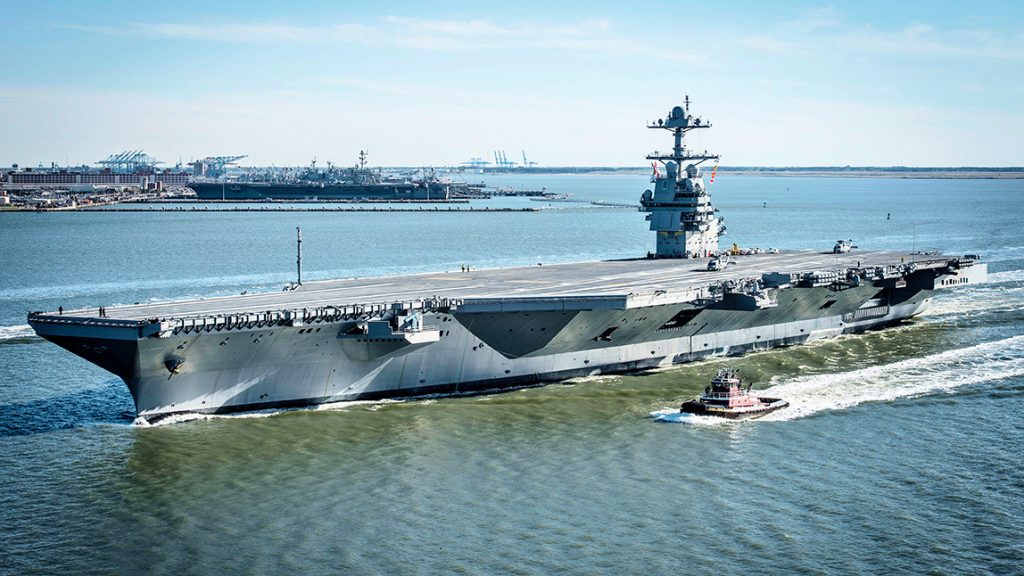
That’s the power of Distributed Maritime Operations today and it’s a noted difference from 20 years ago.
It enables our Joint Force to execute the National Defense Strategy’s mandate to “complicate the military preparations of our competitors and enhance our own warfighting capabilities.”
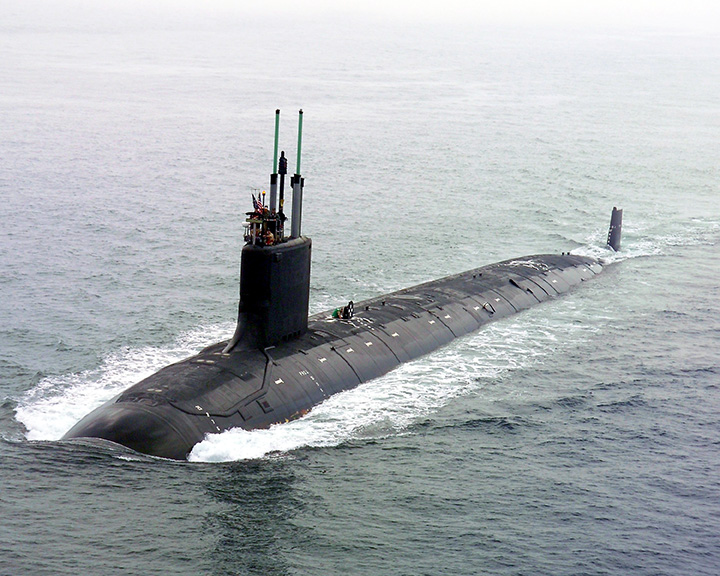
I strongly support Admiral Gilday’s vision for DMO, and all aspects of the Navy’s Navigation Plan. That’s why our budget invests in more of the nimble and survivable platforms that enable our forward presence, capacity, and lethality.

We are holding the line on DDG51 and VIRGINIA, with a budget that funds two Flight III Destroyers and two attack submarines per year. We will launch our second century of carrier aviation with the deployment of USS GERALD R. FORD, along with further purchases of the F-35 and the continued development of the MQ-25.
And we will continue progress on future programs like COLUMBIA, the backbone of tomorrow’s nuclear deterrent, and CONSTELLATION, which will provide greater presence and lethality on the surface.
We will also invest in our amphibious fleet, fully funding an additional LHA, and an additional LPD, in the coming year.
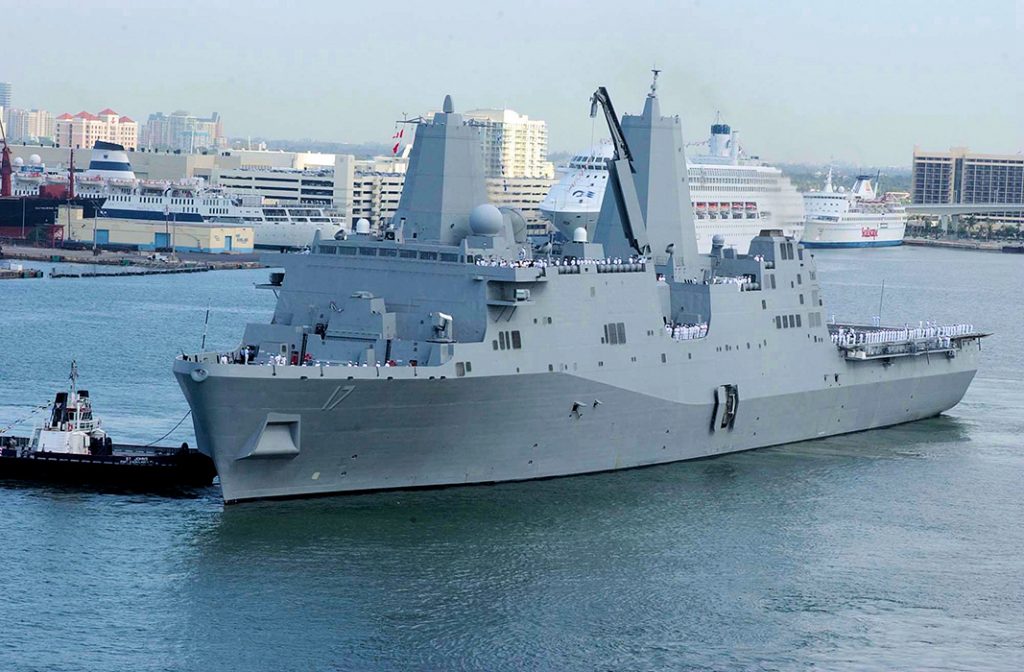
These warships are vital for the organic mobility and persistence of our Marine Corps, always in high demand as a “Swiss Army Knife” to meet the needs of the Joint Force.
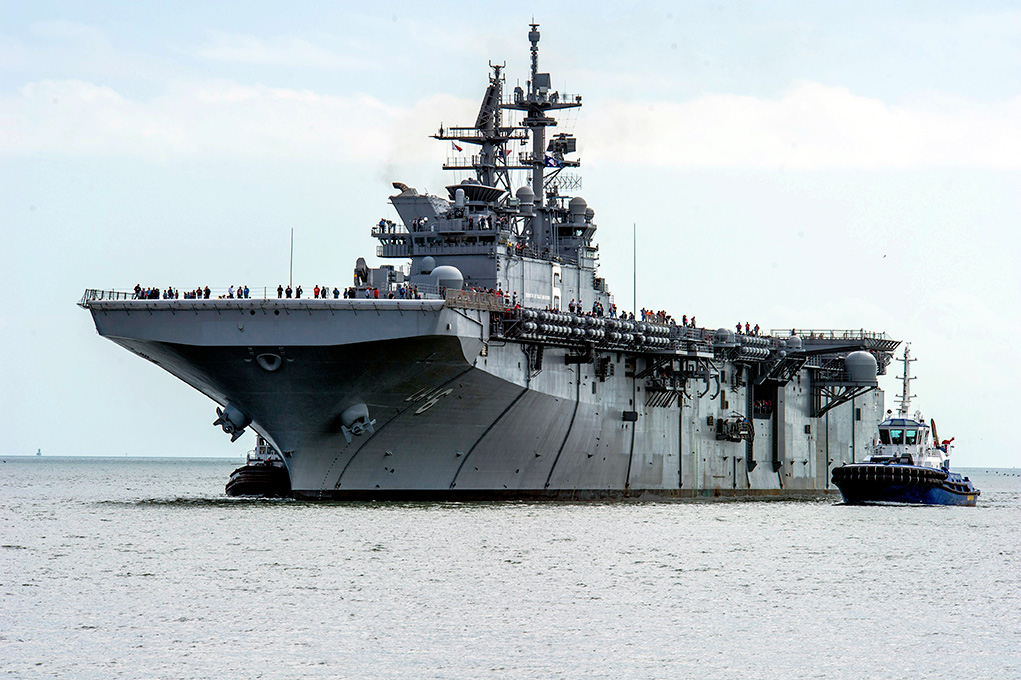
The modern Amphibious Ready Group and Marine Expeditionary Unit are the 9-1-1 call for Combatant Commanders in the most dynamic and volatile situations, from humanitarian disasters to combat.
As General Berger put it in his initial planning guidance, “no matter what the crisis, our civilian leaders should always have one shared thought – Send in the Marines!”
I am deeply grateful to the Commandant for his committed leadership on Force Design 2030, and I strongly support his plan. Let me perfectly clear about that.
Force Design 2030 will form the expeditionary core of our entire Joint Force long into the future – so we must fund it!
Right now there are over 30,000 forward deployed Marines, operating at sea and in over 50 countries around the world. We must ensure they are armed, mobile, and ready to “fight and win in any clime and place.”
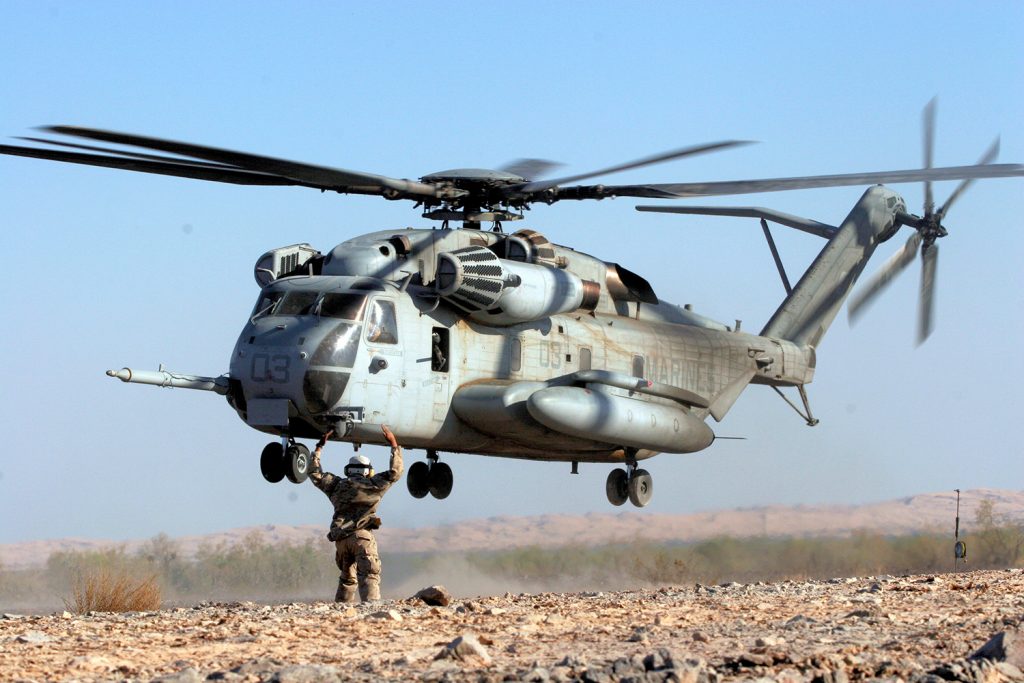
That’s why we’re investing in platforms the CH53 Kilo – the most powerful helicopter in the Joint Force. The capacity and lift of this aircraft is transforming the organic mobility of units like the new Marine Littoral Regiment in the Indo Pacific.
We will improve our persistence and lethality in the contested zone through Expeditionary Advanced Basing Operations.
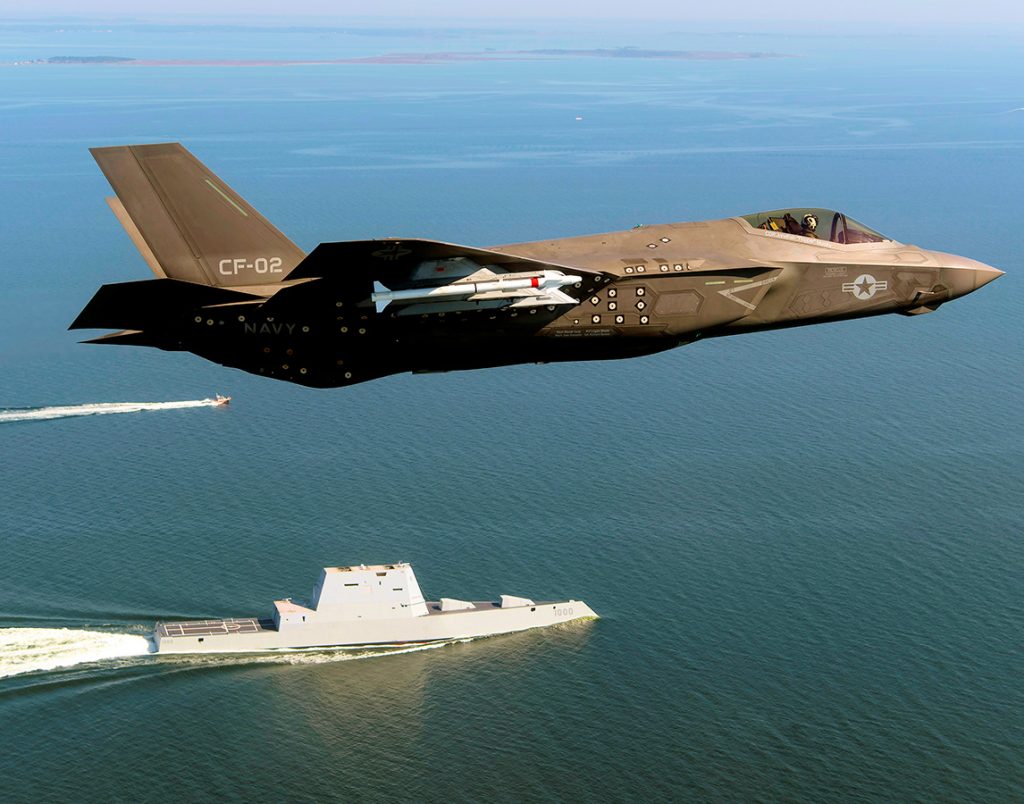
I saw this concept in action in North Carolina, as Marines simulated the seizure of a contested airfield, then landed and refueled a squadron of F35s from a C-130J, all in a matter of minutes.
Linking all of these new warfighting capabilities will be a new Naval Operational Architecture we are developing through Project Overmatch.
We are deadly serious about planning for the future and meeting the challenges we can anticipate – and those we cannot.
Anyone who tells you they know the exact number of every platform that will meet the exact needs of the 2030s and 2040s must be gifted with second sight. I don’t have that. But what I do have is an abiding respect for the American taxpayer of today and tomorrow.
And the greatest way I can demonstrate that is to be clear and transparent on our anticipated needs – and the degree of uncertainty in those figures.
Because while we can estimate the kinds of adversaries and challenges we’ll face five, ten and twenty years down the road, we cannot be certain.
So we must build and prepare in the most powerful and agile force we can, in the most efficient way possible, while preserving options for future leaders to adjust to a changing security environment. And we haven’t always done that in the past.
I don’t want tomorrow’s Secretary of the Navy to have to choose between building the right capabilities, or maintaining high cost legacy platforms that don’t meet our needs.
I have an abiding respect for the Constitutional role of Congress to “provide and maintain a Navy.” In the end, the power of the purse resides on Capitol Hill. But as we enter this budget season, I will ask Congress to provide the tools we need to execute the Navigation Plan and Force Design 2030, without burdening us with unnecessary legacy platforms that cost a lot to maintain and operate and perhaps don’t meet current threats. Every taxpayer dollar must be maximized to ensure the right mix of capacity, capability, modernization, and readiness for our frontline warriors.
Because our greatest asset will always be the Sailors and Marines who wear our uniform, and the families who serve at their side.
We owe it to them today, and tomorrow, to provide them with the best opportunity to succeed.
That’s why my second guiding principle is empowering our people, by fostering a culture of warfighting excellence. Together, we must continue to creatively recruit, retain, equip, and promote the best of all of America.
We need a diverse force today, so every child in America can see themselves wearing the uniform tomorrow. This is a national security imperative.
In practice this means we have to take talent management to a higher level, matching the diverse talents of individuals to the needs of the Joint Force. It means showing leadership, through words and example, to eliminate sexual harassment and assault from every part of our ranks. And it means taking a deliberate approach to building a leadership cadre that truly represents our nation.
As Secretary I am determined to do everything I can to enable the success of our Sailors and Marines, and to care for their families.
I just came back from Europe, where I had the opportunity to visit with many of those Sailors and Marines aboard USS HARRY S. TRUMAN.
I was inspired with their morale, skill, and pride as they conducted NATO allied operations alongside the aircraft carriers of the French and Italian Navies.
That pride stands in sharp contrast to what we are observing in the Russian military today. In the face of spirited resistance from the Ukrainian people, aided by our weapons and support, Vladimir Putin’s horrific invasion is grinding to a stalemate.
More ominously for the Putin regime, the bubble of disinformation which encircled the Russian people is bursting. The Russian economy is crumbling back to the standards of the 1980s. And Russian troops are turning on their own leadership.
Democracy will always prove stronger than dictatorship, because our people know what they are fighting for. Every Sailor and Marine in our force is motivated in some way by the ideals of our Nation, and the freedom for which our flag stands.
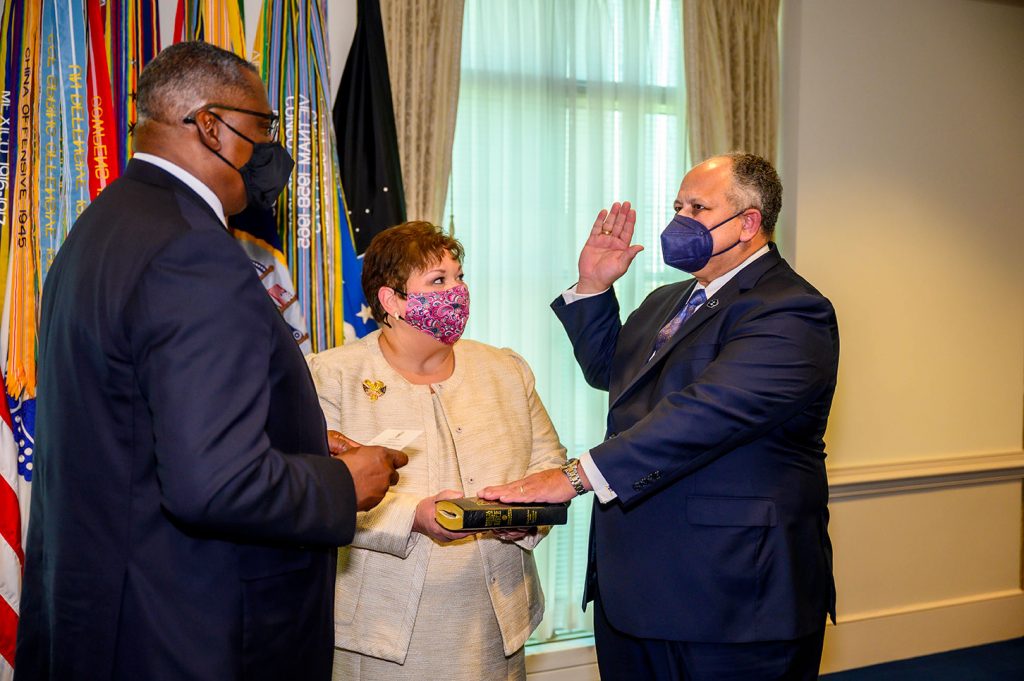
For me, Naval service was a chance to give back to the Nation that welcomed me and my family as refugees from the authoritarian regime of Fidel Castro. Another communist leader.
Through decades of service in uniform, private industry, and government, I’ve strived to live up to my oath to uphold and defend the Constitution.
Most of the people in this room have at some point raised their right hand and taken that same oath.
It’s one of the things that sets our Nation apart – we don’t swear an oath to a person, party, or service.
We pledge ourselves to an enduring document, rooted in a common commitment to “secure the blessings of liberty.”
It’s a document that guarantees so many of the rights we see being trampled in Moscow and Beijing today, from the freedom of speech to the due process of law.
And it is those very freedoms that fuel the greatest strengths of our Nation.
Our economy is protected by laws and standards, so our industrial partners have the confidence and motivation to innovate and transform the future.
Our government is kept accountable by a free press and the freedom of speech, so the American people can trust us with their tax dollars.
And our allies and partners are motivated to stand with us in defense of the international rules-based order because they know of our commitment to freedom, liberty, and justice for all.
From industry, to government, to our global alliances, the partnerships we have built on a foundation of common values represent our greatest advantages against authoritarian regimes.
—
That’s why my third guiding principle is strengthening our strategic partnerships.
I spent 17 years as a business owner attending this very conference serving the Armed Forces, so I understand how much we rely upon industrial partnerships to protect our nation.
I know the importance of consistent and predictable funding, so those of you in our industrial base can invest in your critical infrastructure, and maintain a workforce with the critical skills that you need and sometimes is hard to find.
At the Department of the Navy, we are committed to engaging with industry, understanding your challenges, and responding to your needs.
But we also need our partners to manage costs, fight requirements creep, and deliver platforms on-time and on-budget.
We owe it to the American taxpayer to ensure that each dollar reaches the warfighter in the most efficient and effective way possible.
And we owe it to those warfighters – and their families, to ensure they are equipped with the most effective platforms and equipment possible.
Because I have seen what our people can do with the right tools for the job.
The aircraft, the ships, the weapons, and the supplies you provide are transforming our force, and strengthening our alliances in ways we hardly could have imagined a decade ago.
When I visited Marine Corps Air Station Iwakuni, I saw aviators and crews working side-by-side with our allies, using the F-35B to strengthen our allied deterrence in the Indo-Pacific.
They can even land on a Japanese ship, the converted Destroyer IZUMO.
And last year, Marine Fighter Attack Squadron 211 deployed aboard HMS QUEEN ELIZABETH, the new flagship of the Royal Navy.
For seven months, our Naval Aviators operated ten F35Bs alongside eight others flown by the Royal Air Force.
Together they formed the largest fifth generation air wing on earth, the centerpiece of a multinational strike group that traversed the globe.
Along the way they operated alongside allies and partners including Australia, France, Israel, Italy, New Zealand, Japan, Malaysia, Singapore, and many others.
That a level of allied unity and strength China nor Russia cannot ever hope to achieve.
Because unlike Moscow and Beijing, we don’t treat allies like client states or satellites. We respect them as partners, leaders, and friends.
We have direct conversations, and don’t agree on everything.
But we all agree on the importance of working together to defend the rules-based international order that protects us all.
Each nation has its own capabilities and skills that can act as a force multiplier to protect our mutual interests and deter the aggression of others.
And I am determined to strengthen these ties even further, leveraging the unique strengths and experiences of every nation.
The National Defense Strategy calls on our force to “incorporate ally and partner perspectives, competencies, and advantages at every stage of defense planning.”
And I take that mandate seriously. Our forces are learning together, training together, and operating together, from the Indo Pacific to the Arctic Circle.
I saw this in the preparations for Exercise COLD RESPONSE in Norway, which brought together 30,000 troops, 220 aircraft, and 50 vessels from 27 countries.
This exercise provided a critical opportunity for our forces to operate near the harsh Arctic environment on NATO’s northern flank.
This exercise also brought home a solemn reminder of the dangers our men and women in uniform face every day, as four proud United States Marines lost their lives when their Osprey crashed in extreme weather.
I know I speak for everyone here when I extend my deepest condolences to the families of those fallen warriors and those that died at Abbey Gate.
They died as they lived – serving, preparing, and operating alongside our allies in the cause of freedom.
Remember those warriors as you return from this conference.
Let their example motivate you in our shared mission of National Defense.
Bring a sense of urgency to all that you do to equip, train, recruit, lead, and support the Sailors and Marines who keep watch for us all.
Because they are counting on us. And as a lifetime Navy League member I know that we will come through.
To quote a former Assistant Secretary of the Navy named Franklin Roosevelt, “Together, we simply cannot fail.”
So thank you all for your support for our Sailors and Marines. And to all who wear the uniform today, thank you, and your families, for your service.
May God bless you all. Thank you.










